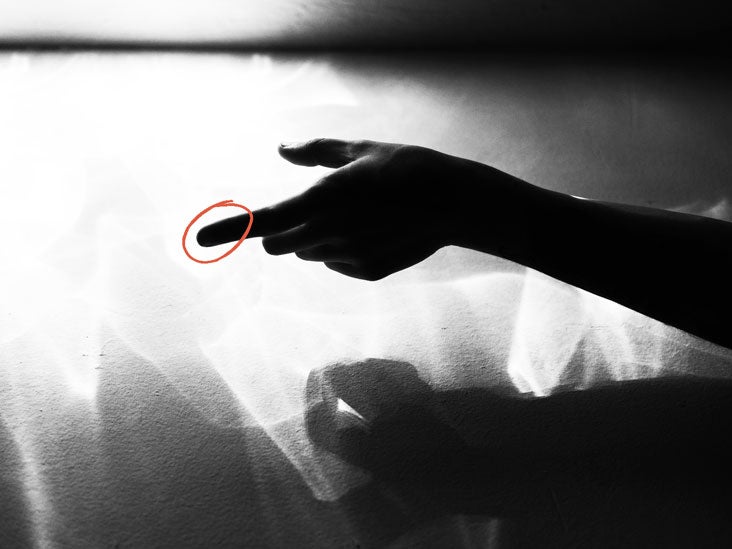Blood
Blood clot in the finger: Causes, treatment, and symptoms
Although uncommon, blood clots can form in the finger. They may appear as a small, discolored lump under the skin. A collection of blood can also form under the fingernail, commonly due to injury such as hitting the fingernail.
Blood clots in the fingers are relatively rare but may occur due to trauma or injury of the fingers.
This article looks at the symptoms and causes of a blood clot in the finger. It also examines the treatment options and when a person should contact a doctor.
Blood clots are semi-solid clumps of blood that can form in the arteries or veins.
Two types of blood clots can form in the fingers — palmar digital thrombosis and subungual hematoma.
Palmer digital vein thrombosis refers to a blood clot in the finger that develops on the palm side of the hand. Subungual hematoma refers to a collection of blood underneath the fingernail, usually due to an injury.
A subungual hematoma usually forms due to impact on the fingernail.
Palmar digital vein thrombosis can develop due to:
- trauma or injury
- repetitive tasks that can compress the hands, such as gardening, sewing, or manual labor
- having a blood clotting disorder
The palmar veins, which run through the fingers, are small, and connective tissue and fat surround them. Their size and surroundings may make the veins more likely to collapse, resulting in a blood clot.
Certain medications may also increase the risk of blood clots, including some hormonal birth control.
A blood clot in the finger may appear as a small lump under the skin and may cause:
- pain or tenderness
- swelling
- warmth
- inflammation or discoloration of the skin
Palmar digital vein thrombosis usually occurs in the fourth finger, in either the left or right hand. The clot is usually near a joint and on the palm side of the hand.
Blood under the fingernail may appear as a red or purple mark, which may later turn dark brown or black due to the blood clotting. The nail may also feel tender or sore.
A blood clot in the finger may resolve without treatment. However, it could indicate a blood clotting disorder. Consulting a doctor can ensure people do not miss a condition that may require treatment.
People will need to consult a doctor as soon as possible if they have any warmth, swelling, discoloration, or pain in an arm or leg. This may be a sign of deep vein thrombosis.
People will need to speak with a doctor for a blood clot under the fingernail if they have:
- bleeding, which does not stop
- severe pain
- a deep cut in the finger, which may require stitches
- a broken finger
Does a person need to go to the emergency room?
A blood clot in the finger may be dangerous if it breaks free and travels through the body.
A pulmonary embolism (PE) is a blood clot in the lung that can be life threatening. Symptoms of PE include:
- chest pain
- sudden shortness of breath
- rapid heart rate
- unexplained cough, with or without blood
If people have any of the above symptoms, they need to seek medical help straight away by going to the emergency room or calling 911.
To diagnose a blood clot in the finger, a doctor will assess symptoms and medical history.
They may use imaging tests, such as ultrasounds or MRIs, to rule out other conditions.
Treating a blood clot in the finger usually consists of massaging the lump and applying a compression bandage to the finger. In some cases, people may need surgery to remove the clot.
For a blood clot under the fingernail, treatment may help reduce swelling and pain. People may be able to treat the blood clot at home by:
- applying ice
- elevating the finger
- compression of the finger
- rest
In some cases, a doctor may need to pierce the nail to drain excess blood, which relieves excess pressure.
How long does a blood clot in your finger last?
The duration of a blood clot in the finger may vary depending on when people seek treatment and the treatment type.
For a blood clot under the fingernail, the body will reabsorb the blood over time, and the discolored nail will grow out. The nail may take 6–9 months to grow out fully.
A blood clot in the finger is not usually dangerous and may resolve with treatments such as massage and compression.
If a blood clot relates to a blood clotting disorder, people may require treatment to prevent complications. In some cases, surgery may be necessary to remove the clot.
A subungual hematoma is a temporary condition, and people will usually be able to treat it with ice and compression while waiting for the nail to grow out.
Trauma, compression, and injury to the hand are common causes of palmar digital vein thrombosis. Taking protective measures with manual labor and repetitive tasks may help reduce the risk of developing a blood clot in the finger.
Addressing any blood clotting disorders may help prevent a blood clot from forming. These measures include taking blood thinning medication.
A blood clot may form in the finger or under the fingernail and may form due to trauma or a blood clotting disorder.
Massage, compression, and blood thinning medications can treat a blood clot in the finger. In some cases, people may need surgery to remove a clot.
Individuals need to consult a doctor for any concerning symptoms or seek emergency help for signs of PE.

